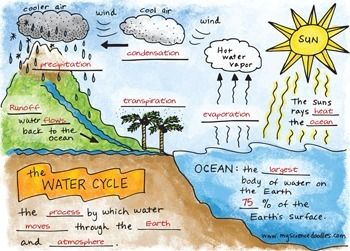Kindergarten Units (Based upon Oregon Next Generation Science Standards):
Life Science 1-1: Use Observable Patterns to Describe What Plants and Animal Need for Survival.
- Introduce the scientific concepts through the use of children’s books and through exploration.
- Scientists make observations. They look for attributes with a measurable difference.
- Scientists look for patterns.
- Scientists assemble evidence to support their ideas.
- Sun, water, & soil vs. food, moderate temperature & shelter.
- Do they each need love?
Earth & Space Science 2-1: Share and Use Observations of Local Weather Conditions to Describe Changes in Patterns over Time.
- Describe the weather pattern over time (qualitative data). Examples of patterns: it is cooler in the morning than in the afternoon, it is warmer in the summer than in the spring, fall or winter.
- Track how many of each type of weather pattern occurs each month (quantitative data). Perhaps compare results from year to year.
- Look at data from first-hand observations or from the media, to describe patterns.
Earth & Space Science 2-2: Plants and animals can change their environment to fit their needs.



